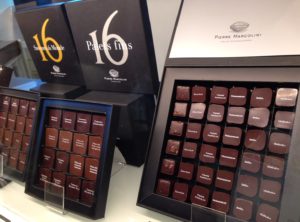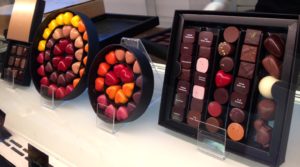13 May 2016
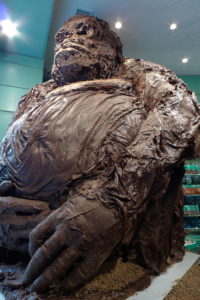 Several years ago, while roaming the streets of St Germain, as you do playing tourist in the City of Love (aka Paris), hubby and I were stopped in our tracks by a life-sized sculpture of a gorilla in a shopfront window. Certainly not a common sight in a city that boasts beauty, elegance, class, style and finesse as a minimum criteria. We were compelled to walk into the shop to check it out. Upon close examination, we discovered that the gorilla was entirely edible, hand sculpted with the finest chocolate that money can buy.
Several years ago, while roaming the streets of St Germain, as you do playing tourist in the City of Love (aka Paris), hubby and I were stopped in our tracks by a life-sized sculpture of a gorilla in a shopfront window. Certainly not a common sight in a city that boasts beauty, elegance, class, style and finesse as a minimum criteria. We were compelled to walk into the shop to check it out. Upon close examination, we discovered that the gorilla was entirely edible, hand sculpted with the finest chocolate that money can buy.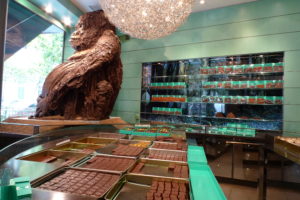
Serendipitously, this is how I came to learn about the chocolate genius that is Patrick Roger. That day, I was lost in chocolate heaven; completely immersed in every truffle, praline, ganache, gianduja, rocher, glacé fruit, bar and square, each hand crafted with utmost creativity. One could not help but be drawn to the beautiful, spherical ganaches, boasting glossy, opalescent domes. Artistic perfection of the highest level. These and many others are Patrick’s signature creations. Suffice to say, my intent to spend the day shopping for fashion and shoes had taken a back seat.
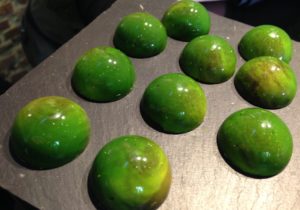 The rainforest-coloured Amazon ganache caught my eye. I remember my first bite rather vividly, as if I had taken it just yesterday. The crisp and perfectly tempered dome; so thin and delicate. Then, the bursts of refreshing lime on my palate, assimilated into the smoothest caramel ganache I have ever tasted. The caramel was just the right consistency, not too thick and not too oozy. At that moment, I realised that we had stumbled upon chocolate greatness.
The rainforest-coloured Amazon ganache caught my eye. I remember my first bite rather vividly, as if I had taken it just yesterday. The crisp and perfectly tempered dome; so thin and delicate. Then, the bursts of refreshing lime on my palate, assimilated into the smoothest caramel ganache I have ever tasted. The caramel was just the right consistency, not too thick and not too oozy. At that moment, I realised that we had stumbled upon chocolate greatness.
Since that first encounter, I’ve learnt that Patrick is not only highly accomplished but also equally acclaimed in his field, having won the lifetime title of Meilleur Ouvrier de France (MOF) Chocolatier – the highest accolade in French craftsmanship. Creative, unconventional, bold, passionate, audacious, masterful and inventive are just some of the words that have been used to describe him. I’ve also watched a documentary about his chocolate journey and larger than life chocolate sculptures.
 Fast forward to October 2015. I am standing with a group of keen chocoholics in the opulent Galeries Royales St Hubert in Brussels, listening intently to our guide, Wanda, as we set off on a highly anticipated chocolate tour of Brussels. Wanda asks the crowd “What is the best chocolate that you have ever eaten?”. We go around the group and when my turn comes up, I answer “For me, it has to be Patrick Roger’s Amazon lime and caramel ganache!”. She looks at me – part astonished, part disappointed and says “That is the piece the resistance of this tour. If you’ve already had the very best, you may be disappointed.” I smile to myself. I may have tasted the best but I still have much to learn and experience, Wanda. My chocolate adventures have only just begun….
Fast forward to October 2015. I am standing with a group of keen chocoholics in the opulent Galeries Royales St Hubert in Brussels, listening intently to our guide, Wanda, as we set off on a highly anticipated chocolate tour of Brussels. Wanda asks the crowd “What is the best chocolate that you have ever eaten?”. We go around the group and when my turn comes up, I answer “For me, it has to be Patrick Roger’s Amazon lime and caramel ganache!”. She looks at me – part astonished, part disappointed and says “That is the piece the resistance of this tour. If you’ve already had the very best, you may be disappointed.” I smile to myself. I may have tasted the best but I still have much to learn and experience, Wanda. My chocolate adventures have only just begun….
So, does this rate as an ultimate chocolate experience? Most certainly yes, to the chance discovery of Patrick Roger and his chocolate masterpieces, and the affirmation of his mastery during my chocolate tour of Brussels!
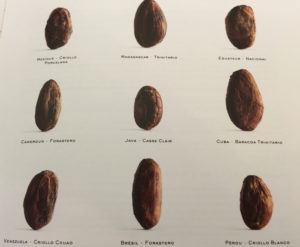 They say that a picture paints a thousand words. What does this picture mean to you? My initial guess is, probably not much. It was taken at world renowned Pierre Marcolini’s flagship chocolate shop, during my chocolate tour of Brussels last year.
They say that a picture paints a thousand words. What does this picture mean to you? My initial guess is, probably not much. It was taken at world renowned Pierre Marcolini’s flagship chocolate shop, during my chocolate tour of Brussels last year.